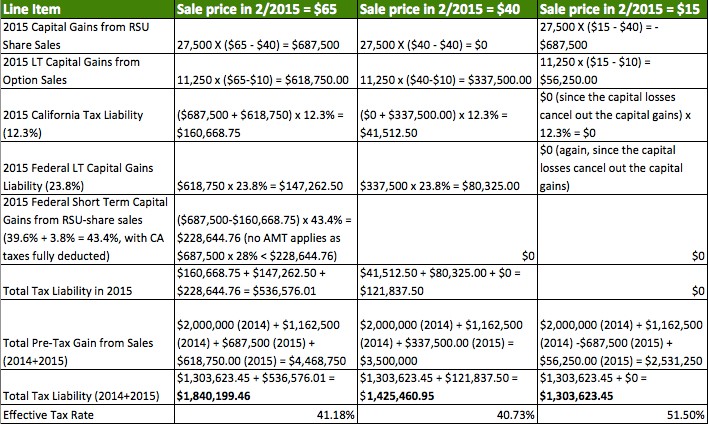Strategies For Selling Stock PostIPO Wealthfront Knowledge Center
Post on: 2 Апрель, 2015 No Comment

One of the most important and difficult decisions you’ll make after your company navigates a successful IPO and lockup period is when and how much of your stock to sell.
After numerous Wealthfront clients asked the question, Jared Jacobs, one of the engineers here at Wealthfront, created a simulation to help employees at new public companies visualize different approaches to selling some or all of their stock. As far as we know, it’s the first publicly available simulator of its kind.
In a few weeks, working with data culled from several third-party providers, we plan to publish a post that evaluates the optimal stock sale strategy for all of the 1,176 IPOs that took place between Jan. 1, 2000 and Dec. 31, 2008. We plan to eventually update our simulator to include more companies and sales strategies.
The simulator above looks at five typical stock performance patterns: increasing, decreasing, peak-dominated, u-shaped and oscillating. We picked 10 companies, two that fit each pattern, to offer real-life examples.
Then we applied four different stock-sale strategies to the stock performance of each company, comparing the results to what would have happened if an employee sold none of her shares. Here are the strategies:
- Sell 10% each quarter for 10 quarters
- Sell 10% of the remaining shares each quarter
- Sell 50% up front and 10% per quarter for five quarters
- Sell all shares immediately post-lockup
One key assumption we’ve made is that most investors already understand it’s important to diversify their portfolios. In a blog post a few months ago, Over What Time Period Should I Sell My LinkedIn Shares. Qian Liu outlined the reasons it’s dangerous to allow your company stock to make up too large a share of your portfolio. If you’re already very wealthy, or a gambler, you may take a different approach. We assume because you’re reading this that, sensibly, you’ve decided to diversify.
Easy Conclusions
With hindsight, there are some easy conclusions to draw from the simulator designed by Jared, who has an interest in data visualization. Obviously, if you work for a company that’s going to perform like Google, your best bet is to hold the stock. If you work for a company that’s going to perform like DivX, you’ll be better off unloading all of your stock on day one, after the lockup period expires.
Unfortunately, as Qian wrote in the post a few months ago:
It’s extremely difficult to predict the direction of future price movement. People who believe they have enough information or knowledge to time the sale of a stock usually do not. Employees might benefit from greater knowledge of their company, but they also may suffer from familiarity bias. (Here’s an article that defines it and one of our earlier posts that talks about familiarity bias and other mistakes investors make.) By spreading the sales across time and executing at different price points, an investor effectively makes multiple smaller bets, is more likely to get a higher average price and thus has lower execution risk You can call it temporal diversification or dollar cost averaging. Whatever you call it – it may help you sleep better at night.
You can see from the simulator that the extreme strategies sell all or hold all have the biggest risks and rewards.

Ungoverned Market
But rational investors recognize that they do not know the future, and even the most attractive bets sometimes turn sour. For a short while, Infinera, a telecom equipment maker, was hailed as the next Intel. And actually – to our point – it still might become that.
Sometimes, stocks sink for reasons unrelated to their own strength or weakness. Between spring and fall of 2008, as the financial crisis deepened, Google’s stock sank from $581 a share to $293. It rebounded – but what if you needed cash after the drop to buy a house? And what if it hadn’t rebounded?
Companies can also surprise on the upside. Salesforce’s subscription business model had plenty of doubters in the beginning.
One rational way to approach the uncertainty inherent in any company’s performance in the ungoverned market is to protect yourself against the worst outcomes while still enjoying much of the upside. That means taking a middle-of-the-road approach and selling stock gradually over time. Qian’s deep analysis of a situation for a LinkedIn shareholder agrees with this idea:
Generally, it’s smart to sell shares gradually, in order to limit what we call execution risk – that is, the risk that you will pick the wrong day to sell, when a stock is at a low point, or the wrong day to buy your new investments, when they are at a high point.
Our simulator also shows that the gradual approaches to selling produce good-to-very-good results.
The other interesting thing you’ll notice from the simulator is the choice of selling strategy is far more important to the ultimate value of your portfolio than the decision about how to invest the proceeds. On a $100,000 portfolio, the difference between earning 3% and 9% is often much less important than the difference between making a good decision about when to sell. Take Netflix, for instance. The difference between the approach with the highest return (strategy B, in this case) and the lowest (strategy D) is $166,000 over three years. If you sold all your stock immediately after the lockup for a payout of $60,000 and were a superstar investor with a 9% return over each of the three years, you’d only end up with $77,000.
Our conclusion is: Don’t rely on your investing prowess and downplay the importance of when and how to sell your shares.
We hope you’ve noticed it’s possible to embed the simulator in your own website. You’ll find the code in the upper right corner. If you like the simulator, please consider sharing it on Twitter, Facebook, LinkedIn or other social media.
If you’re interested in the next iteration of the simulator and Wealthfront’s research into the question of when and at what pace to sell your post-IPO stock, please tweet us @Wealthfront. We’ll notify you when we’ve completed our analysis. You’re also welcome to ask us to add a particular company to the simulator, because we want help you gather any information that might help you plan your strategy.
Trading windows: The first 180 days after a company goes public is often called the lockup period because employees of the company are not allowed to buy or sell any of the company’s stock. There are also quiet periods around the end of each fiscal quarter during which employees typically cannot trade. Our simulator assumes that fiscal quarters are aligned with calendar quarters and that quiet periods begin 1 week before the end of each quarter and end 3 weeks into the following quarter. The simulator sells stock on the first open-market day after the 180-day lockup period and on the first open-market day of the second month of each quarter thereafter. Waiting until the second month of each quarter avoids some of the volatility that often accompanies earnings releases.
Taxes: We assumed the hypothetical employee in this simulator held all her shares for more than a year before selling them. If you do that, you’re taxed at the lowest possible rate, the long-term capital gains rate (currently 15%). The simulator does not directly incorporate the impact of taxes because taxes affect each strategy uniformly no one strategy has a tax advantage over any other. That being said, individuals sometimes have unique circumstances that would make one strategy more tax advantageous, so we recommend consulting a tax advisor.
The simulator gathers and presents data from the stock performance of IPOs that occurred from Jan. 1, 2000 and Dec. 31, 2008, and it is not intended to be used as a predictor or guarantee of the performance or outcome of any pending or future IPOs.














